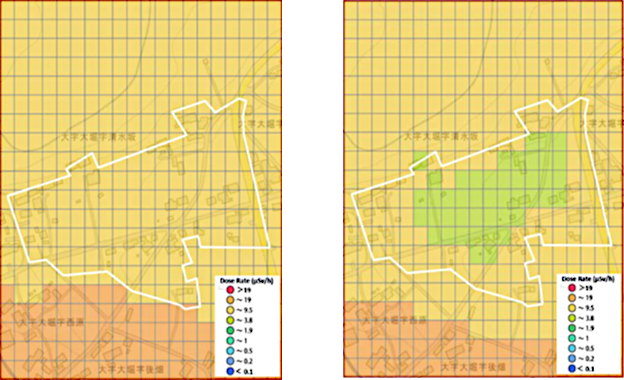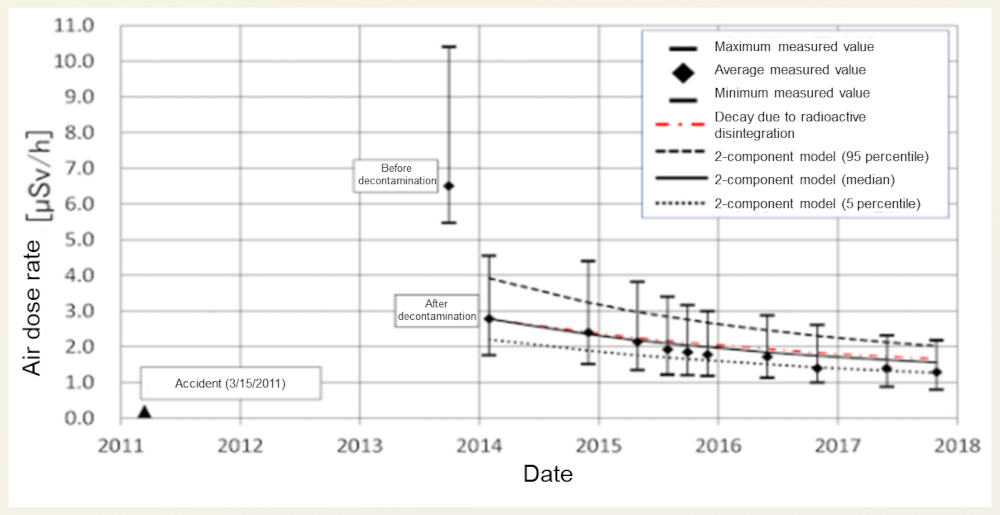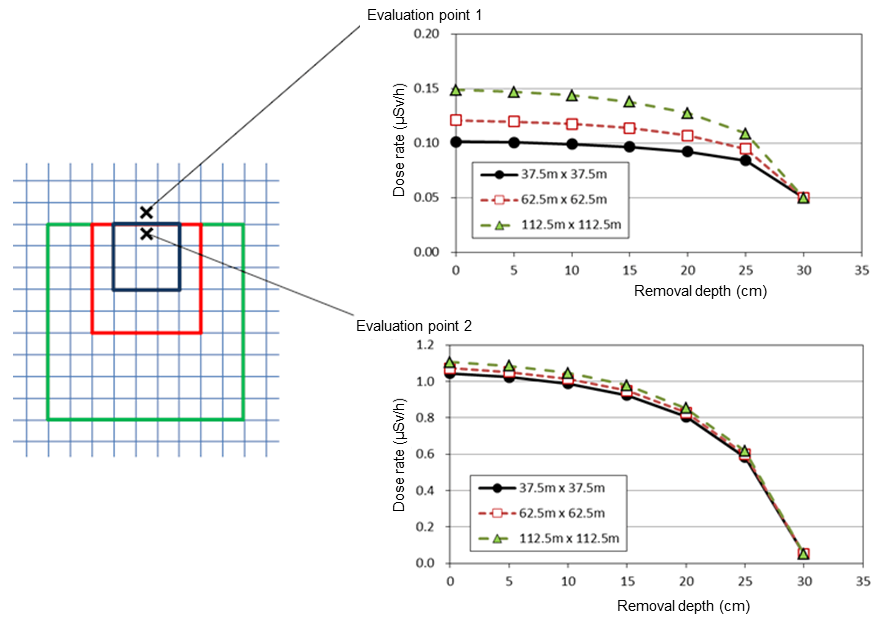Assessment of Exposure Doses and Decontamination
(2019)
QIs the effectiveness of decontamination predictable?
AJAEA has developed a support system for decontamination activities that can accurately predict the effectiveness of decontamination and future air dose rates in short computing time. It is called RESET (Restoration Support System for Environment).
Two additional tools were developed later: ADRET, an air dose rate evaluation model that can simply estimate air dose rates, such as those after decontamination; and 3D-ADRES, which is, as opposed to ADRET, an advanced air dose rate evaluation model that can take into account even the effects of topographic features and terrestrial structures.
RESET was developed to support decontamination projects in areas contaminated by the accident at the Fukushima Daiichi Nuclear Power Station and has been used by Fukushima Prefecture, its municipalities where decontamination is underway, the Ministry of the Environment, etc. The system has also performed decontamination simulations and air dose rate predictions in response to requests from local governments in and outside of Fukushima Prefecture.

Fig.1 Example of analysis by RESET (Left: Dose rate distribution before decontamination; Right: Predicted dose rate distribution after decontamination)

Fig.2 Example of RESET prediction of air dose rates after decontamination
ADRET is a model to calculate air dose rates for flat land based on cesium distribution in soil.
The figure below is an example of estimations obtained by ADRET by request from an institution. It shows how much dose rates will decrease if surface soil is removed by decontamination.

Fig.3 Conceptual drawing of the ADRET calculation method (Malins et al., 2016)

Fig.4 Example of calculations by ADRET: Prediction of dose rate reductions achieved by surface soil removal
3D-ADRES is a model to calculate air dose rates in complex environments with rough terrain, trees, and terrestrial structures. It is intended for detailed evaluations of dose rate distribution and the effectiveness of decontamination.

Fig.5 How 3D-ADRES performs calculations (based on a press release)
Related articles
- Is it possible to predict how air dose rates in living environments will decrease in future?
- Does the effect of air dose rate reduction vary between different decontamination methods? 【Example of analysis】
- How do air dose rates vary depending on radioactive cesium distribution in forests? 【Example of analysis】
- Urban areas have been decontaminated. Is there any residual cesium there?
- To what degree is the air dose rate reduced by decontamination?
References
- 長尾郁弥, 新里忠史, 佐々木祥人, 伊藤聡美, 渡辺貴善, 土肥輝美, 中西貴宏, 佐久間一幸, 萩原大樹, 舟木泰智, 鶴田忠彦, 御園生敏治, 吉村和也, 中間茂雄, 操上広志, 町田昌彦, 山田進, 板倉充洋, Malins, A., 奥村雅彦, Kim, M., Liu, X., 山口正秋, 石井康雄, 武藤琴美, 田籠久也, 齊藤宏, 武宮博, 関暁之, 北村哲浩, 飯島和毅(2019): 福島における放射性セシウムの環境動態研究の現状(平成30年度版), JAEA-Research 2019-002, 235p. https://doi.org/10.11484/jaea-research-2019-002
- 山下卓哉, 沢田憲良(2020): 福島県の帰還困難区域の除染シミュレーションと将来予測, JAEA-Research 2019-010, 227p. https://doi.org/10.11484/jaea-research-2019-010
- Kim, M., Malins, A., Yoshimura, K., Sakuma, K., Kurikami, H., Kitamura, A., Machida, M., Hasegawa, Y. and Yanagi, H. (2019): Simulation study of the effects of buildings, trees and paved surfaces on ambient dose equivalent rates outdoors at three suburban sites near Fukushima Dai-ichi, Journal of Environmental Radioactivity, vol. 210, 105803. https://doi.org/10.1016/j.jenvrad.2018.09.001
